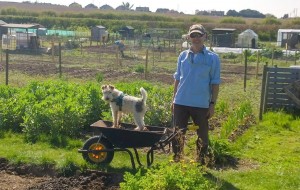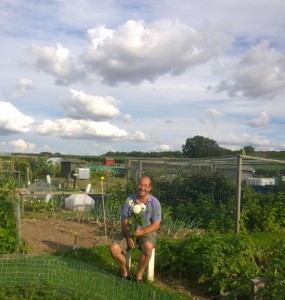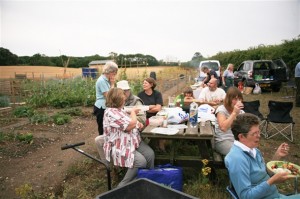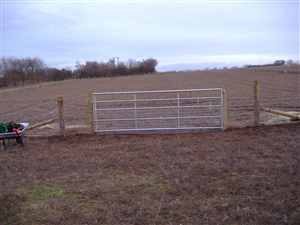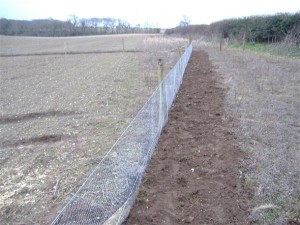Photo Diary
Photographs from the allotments
The Story of Plot #2 – Challenges and Lessons
Having been on a ‘waiting list’ for 18 months I was finally offered Plot 2 in 2014. It is a CHALLENGE to take on a whole plot, particularly if it has been neglected, and can be disheartening if you try to do it all at once.
This is where allotment neighbours become allotment friends by sharing their own experiences, advice and some of their plants! Looking at the website and the photos of the beginnings of Brancaster allotments showed me my experience was nothing new. LESSON 1. Patience is a virtue -Rome wasn’t built in a day.
CHALLENGE 2. All water has to be collected. To meet this need we purchased a shed and two 1,000lt tanks. I placed the shed centrally with the door facing the entrance to the allotments (for security). I ultimately wanted a place to sit so decided on a ‘purely ornamental’ piece of grass in front of the shed.
CHALLENGE 3. Stones. This is common to all the allotments and we often joke that our best crop is flint. LESSON 2. Make the best of a bad thing. My first harvest of stones formed the basis of my herb garden.
CHALLENGE 4. It’s a big area. As my plot had previously been used only for potatoes and strawberries I was told rotavating would create more problems than it solved. LESSON 3. Digging helps keep you fit. I began to do my belt up on a tighter notch.
CHALLENGE 5. Pesky pigeons and other wild life. I noticed that many plots had fruit cages and so in 2014 persuaded Rich to build me one for my birthday. This led to putting other permanent features, such as asparagus and rhubarb beds, in place. LESSON 4. Some sort of Planning is essential and needs to continue.
Some friends kindly gave us an old greenhouse skeleton, which we fitted with polycarbonate panels rather than glass. LESSON 5. High winds can make polycarbonate panels fly a long way. Many thanks to my ‘lottie’ friends who caught and returned some of them to me!
CHALLENGE 6. The soil. Plots at the lower end of the field are sandier, easier to dig but do not hold moisture. LESSON 6. Be adaptable. I cannot grow brassicas, especially Brussels but my asparagus and strawberries seem happy.
LESSON 7. Whatever type of soil you have it needs hard work and feeding. Your results wont be perfect but hopefully will be satisfying (and tasty).
LESSON 8. You never stop learning from Nature (and other allotment holders). I often wander up the hill to chat with others and see what results they are getting, to share what is working and what is not so do come and visit Plot 2 – anytime.
To sum up: I love my allotment. After 40+ years of working inside, to be out in the elements, working alongside Nature gives me many pleasures and feeds my soul as well as my body.
There is still much to do and each year I try to introduce another element. Hence Geoffrey (named after Geoffrey Hamilton) joined me last year and proved to be quite good at his job. We have also just installed another water collection system in response to the extremely dry summer.
How lucky I feel: I can LITERALLY enjoy the fruits (and vegetables) of my labours and also have a quiet space to simply be.
Happy digging.
Jeni
Photographs from 2015
Our Open Day – July 31st
May 19th
April
Everyone is very busy, there is lots to be planted now that the weather is getting warmer.
7th March 2010
There was a lot of building work done on many of the plots during February.
Water collecting systems, sheds, chicken “hotels” and green houses.
31st January 2010
Over half of the allotment holders met on site today to see the fencing finished and inspect their plots








